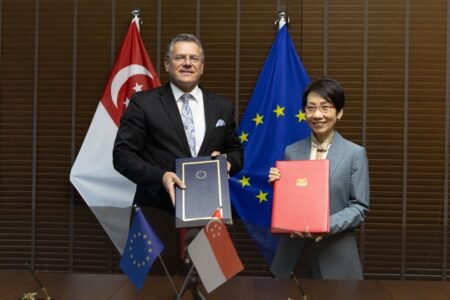The Appellate Body of the World Trade Organisation (WTO) on 30 January confirmed the findings made by a Panel in July 2011 that China’s export restrictions on several industrial raw materials are in breach of WTO rules. The WTO found that China’s export restrictions are not justified for reasons of environmental protection or conservation policy. Today’s final ruling was welcomed by Europe’s trade chief.
Advertisement
Which raw materials are at issue in this case?
Various forms of: bauxite, coke, fluorspar, magnesium, manganese, silicon carbide, silicon metal, yellow phosphorus and zinc.
Does China maintain further export restrictions on other raw materials? How does this case relate to Rare earth?
China is imposing export restrictions on many more raw materials; many of which are critical for EU industry. Rare earth is the recently most prominent example of an important raw material on which China applies significant restrictions.
China currently applies export duties on 363 tariff lines, despite the fact that it committed to refraining from such export duties apart from 84 tariff lines listed in its Accession Protocol to the WTO. In addition, China imposes export quota and licensing regimes on many products.
What does this outcome mean for export restrictions on raw materials not covered by this dispute, like Rare earth?
The outcome of this case obliges China to bring the challenged measures into compliance with the rulings. However, the EU continues to be deeply troubled by China’s use of export restrictions not only on the specific products at issue in this dispute, but also on rare earth and many other industrial raw materials.
In the light of the clear findings of the WTO Panel and Appellate Body we expect China to remove the export restrictions not only with regard to the raw materials covered by the dispute but also with regard to rare earth and other raw materials.
Which industries are most concerned by the current case?
The chemical, steel and non-ferrous metal industries, as well as their downstream clients are the main sectors concerned. This includes a range of industries including producers of beverage cans, CDs, electronics, automotives, ceramics, refrigerators, batteries, medicines to name just a few.
What is the economic impact of this case?
EU imports reach 1 billion EUR a year from China in terms of raw materials covered by the WTO case. The economic importance is well beyond this figure as those represent inputs for the production of a large range of products. Let’s take the example of the steel industry which uses inter alia fluorspar, manganese and zinc: the EU turnover of the steel sector is approximately 150 billion and 410 000 people, representing 1.25% of the total employment in EU manufacturing, are employed by the steel industry.
For more than half of the 9 products subject of the WTO case, EU general dependence (reliance on imports vs consumption) is more than 60% (with more than 90% for bauxite, manganese, and magnesium).For 5 out of the 9 materials, China is a leading producing country with share of the world production share over 50% (> 80% for phosphorus, magnesium, manganese and refractory grade bauxite).
The impact of such distortive measures is twofold. First, restrictions lead to different price levels of inputs for Chinese and EU operators (in the case of many of products concerned, export prices were between 50-100% higher than Chinese domestic prices). As the cost share of these raw materials in further products’ manufacturing can be considerable (often 50% or even more), such price differential can carry a decisive competitive disadvantage.
Second, restrictions affect the availability of raw materials outside China. The industries in the EU that are potentially affected represent about 4 % of EU industrial activity and around 500,000 jobs. They serve a multitude of sectors such as automotive, construction and fire retardants.
Bearing in mind some of these resources cannot be found elsewhere also means that EU companies that are dependent on such resources as inputs for further processing risk having to close down business, with implications for downstream industries. And even if substitutes do sometimes exist, their usage can very often entail looking for new, more technically-demanding or costly production processes, which in turn seriously disrupts EU business activities.
How did the exports from China of the raw materials subject to the dispute evolve in the last years?
From 2005 to 2011, EU imports from China of the products covered by the WTO case have decreased in value whereas global EU imports of the same products increased by approximately 35%. For these products, China’s share in EU supply of these products has decreased from 26% to 17% of total EU imports from 2005 to 2011.
What are the next steps? When will China remove the export restrictions?
Upon request by the EU (and the co-complainants) the WTO Dispute Settlement Body will adopt the reports within 30 days. China will then have to bring its measures in compliance with the rulings. In order to do so, China may ask for a reasonable period of time (RPT).
Report of the WTO Appellate Body
Source: European Commission







